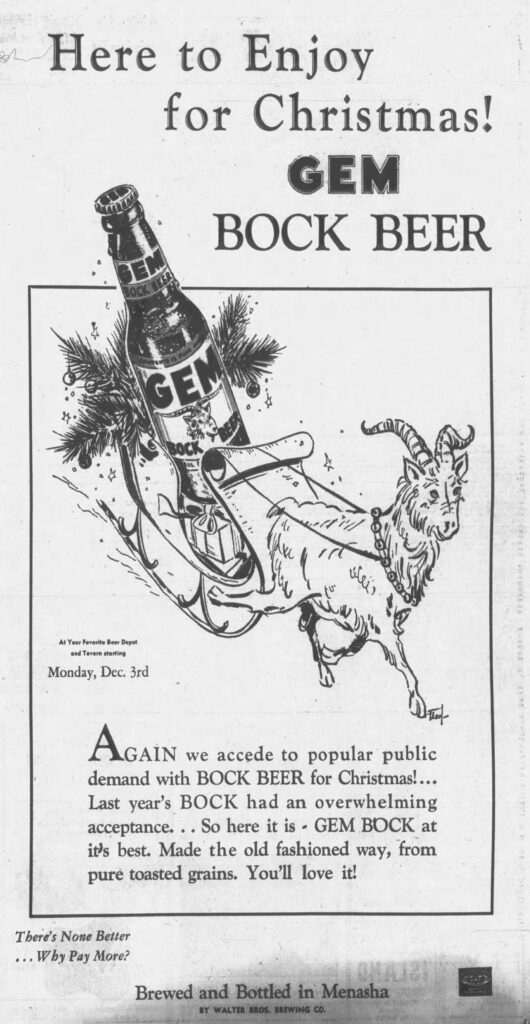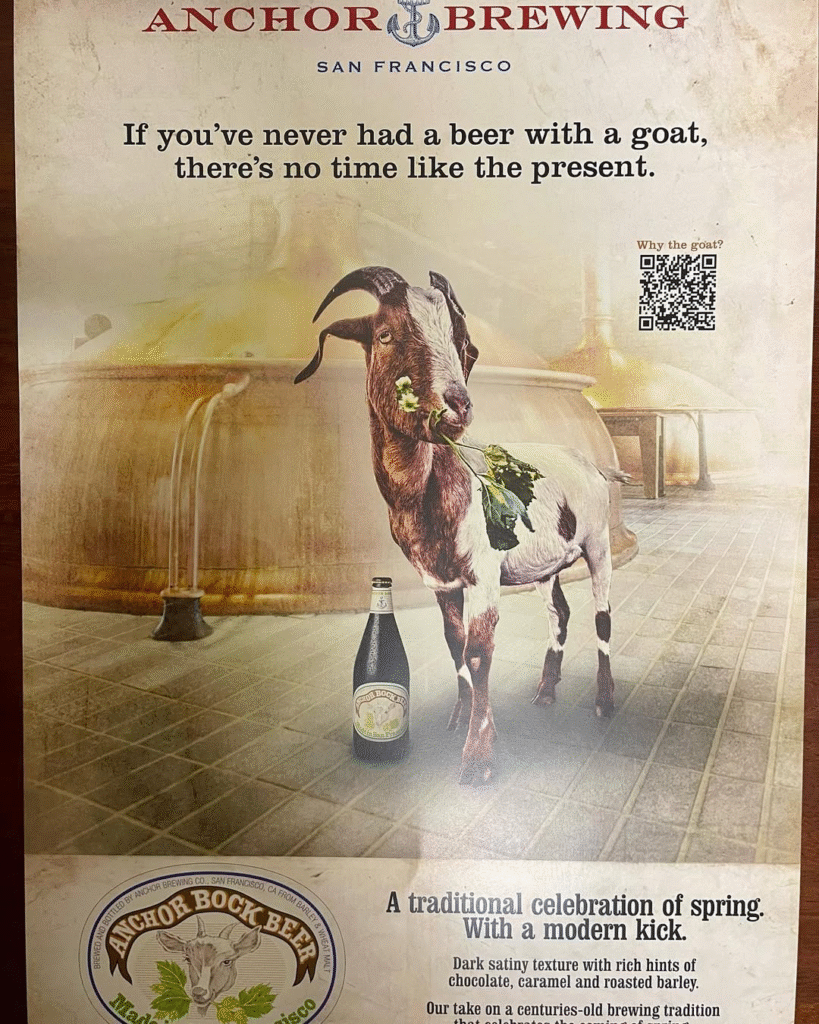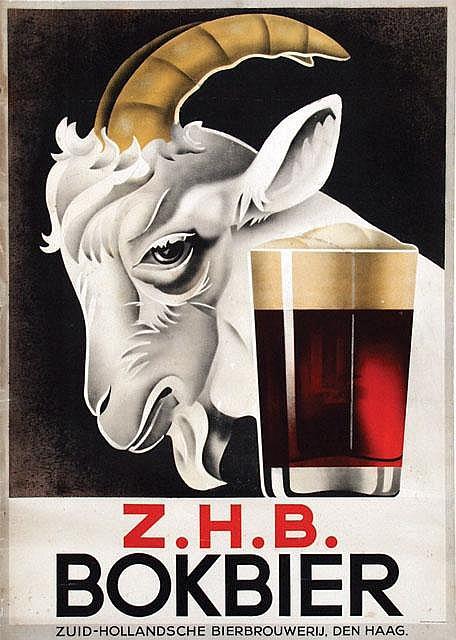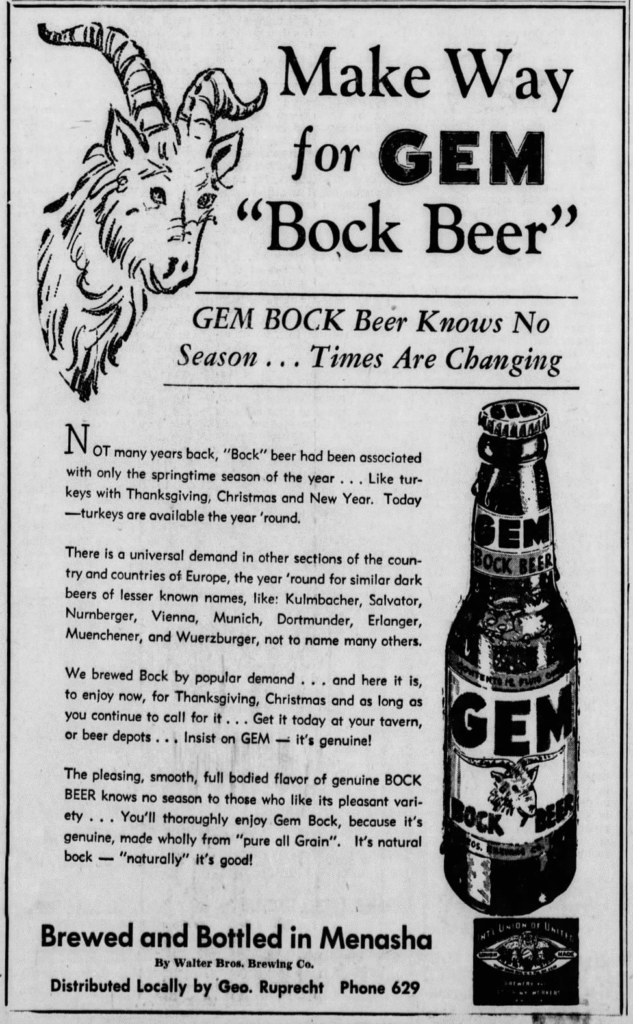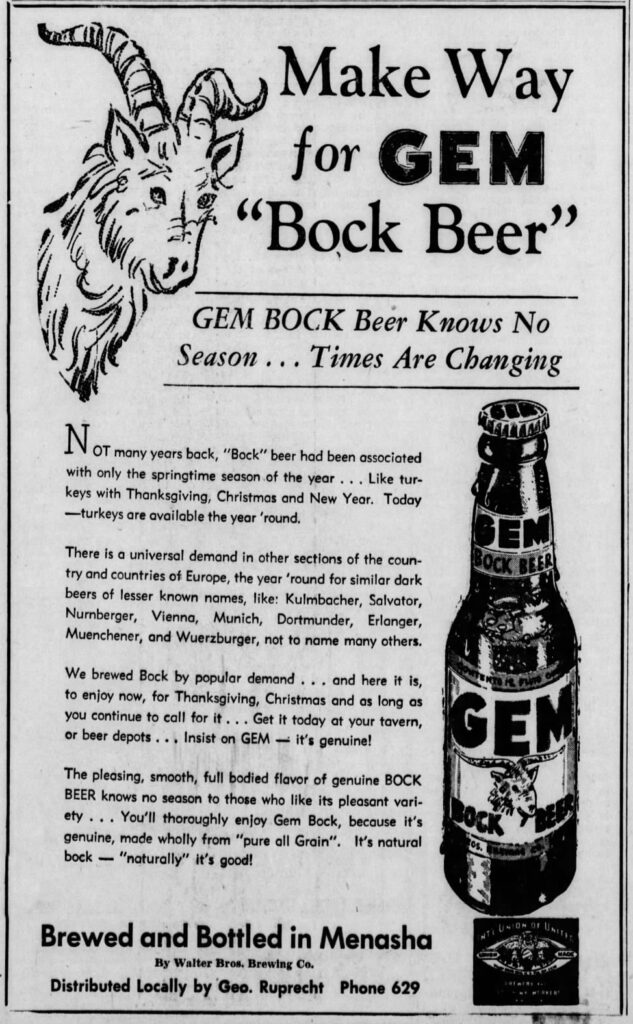
Last year I decided to concentrate on Bock ads for awhile. Bock, of course, may have originated in Germany, in the town of Einbeck. Because many 19th century American breweries were founded by German immigrants, they offered a bock at certain times of the year, be it Spring, Easter, Lent, Christmas, or what have you. In a sense they were some of the first seasonal beers. “The style was later adopted in Bavaria by Munich brewers in the 17th century. Due to their Bavarian accent, citizens of Munich pronounced ‘Einbeck’ as ‘ein Bock’ (a billy goat), and thus the beer became known as ‘Bock.’ A goat often appears on bottle labels.” And presumably because they were special releases, many breweries went all out promoting them with beautiful artwork on posters and other advertising.
Tuesday’s ad is for an unspecified Bock Beer, which was published on December 2, 1945. This ad was for the White Swan Drive-Inn, possibly of Lawton, Oklahoma, but I can’t find any specific mention of it on the interwebs. The owners, Bishop and Smitty, are both Ex-GI’s freshly back in civilian life and running an establishment serving “the colest beer and the hottest dogs,” including Bock Beer. This ad ran in The Lawton Morning Press, from Lawton, Oklahoma.



